Full name John Albert Kramer Name Jack Kramer Weight 84 kg | Retired 1954 Height 1.88 m Role Tennis player | |
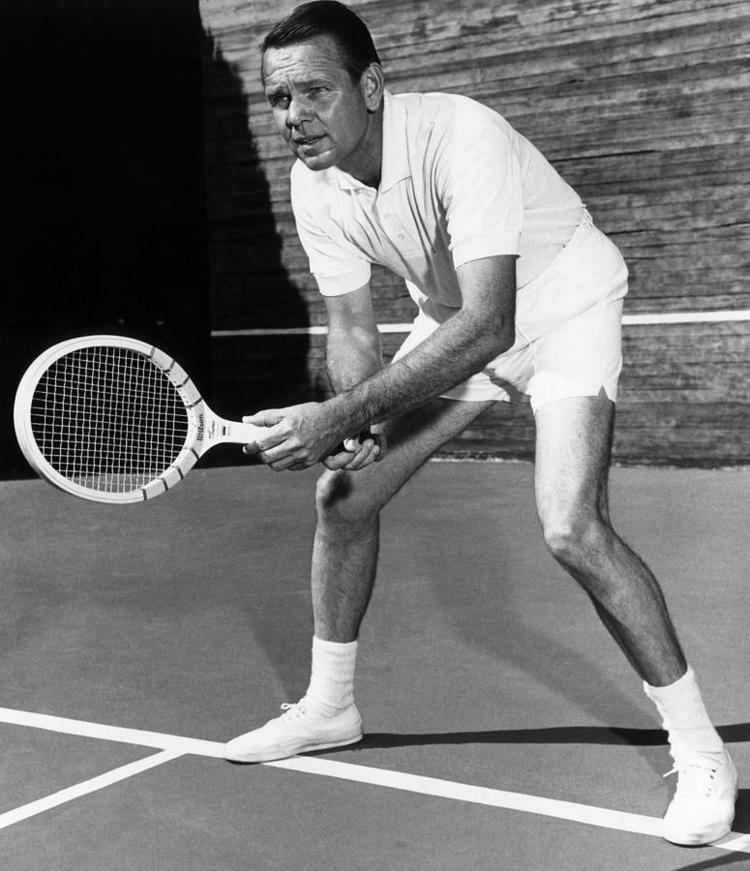 | ||
Turned pro November 1947 (first senior amateur event 1937) Plays Right-handed (one-handed backhand) Books How to Play Your Best Tennis All the Time Similar People | ||
Int. Tennis HoF 1968 (member page) | ||
Jack kramer tennis lesson
John Albert Kramer (August 1, 1921 – September 12, 2009) was an American tennis player of the 1940s and 1950s. A World No. 1 player for a number of years, and one of the most important people in the establishment of modern men's "Open"-era tennis, he was the leading promoter of professional tennis tours in the 1950s and 1960s. He was a relentless advocate for the establishment of Open Tennis between amateur and professional players. An International Tennis Federation (ITF) proposal to introduce Open tennis lost by five votes in 1960, but became a reality in 1968. In 1970, he created the Men's Grand Prix points system. In 1972, he helped found the Association of Tennis Professionals (ATP) with Donald Dell and Cliff Drysdale, and was the first Executive Director. He was unpaid at his request. In that role, he was the leader of an ATP boycott of Wimbledon in 1973, for the banning of Nikola Pilić from the tournament.
Contents
- Jack kramer tennis lesson
- The First Annual LA Tennis Bash at the Jack Kramer Club benefiting the First Break Academy
- Early and personal life
- Amateur player
- Professional player
- Author
- Commentator
- Death
- Awards and honors
- References
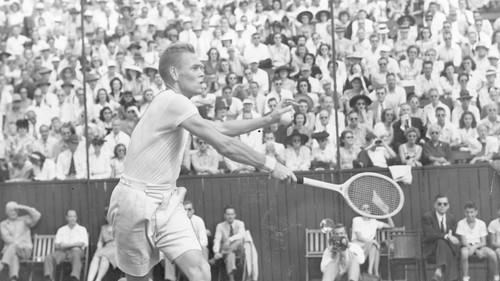
Tall and slim, he was the first world-class player to play "the Big Game", a consistent serve-and-volley game, in which he came to the net behind all of his serves, including the second serve. He was particularly known for his powerful serve and forehand, as well as his ability to play "percentage tennis", which he learned from Cliff Roche, a retired railroad engineer, at the Los Angeles Tennis Club (LATC). This strategy maximized his efforts on certain points and in certain games during the course of a match to increase his chances of winning. The key was to hold serve at all costs, which was one of many things that made Kramer one of the greatest players of all time.
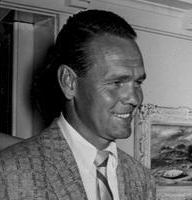
The First Annual LA Tennis Bash at the Jack Kramer Club, benefiting the First Break Academy
Early and personal life
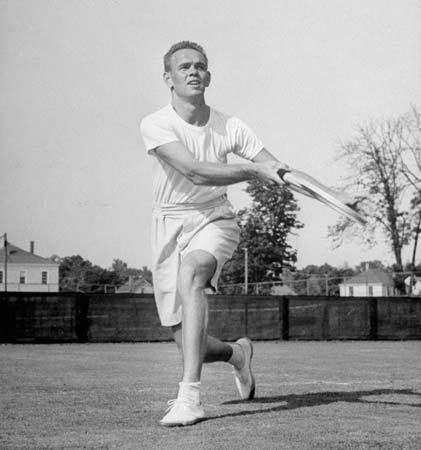
Kramer was the son of a blue-collar railroad worker for the Union Pacific railroad. As a boy he was a fine all-round athlete, particularly in basketball and tennis. When he was 13, the family moved to San Bernardino, California, and after seeing Ellsworth Vines, then the world's best player, play a match, Kramer decided to concentrate on tennis.
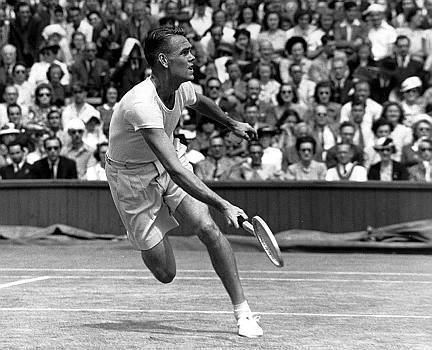
In 1944, he married Gloria, and they had five sons: Bob, David, John, Michael and Ron. They lived in Bel Air, California. He invested in the Professional Tennis Tour, two golf courses at the Los Serranos Country Club in Chino Hills, CA, and racehorses. Starting in 1948, the Jack Kramer Autograph tennis racket from Wilson Sporting Goods became the most popular selling racket of all time, over 35 years (Wilson Sporting Goods-1984).
Amateur player
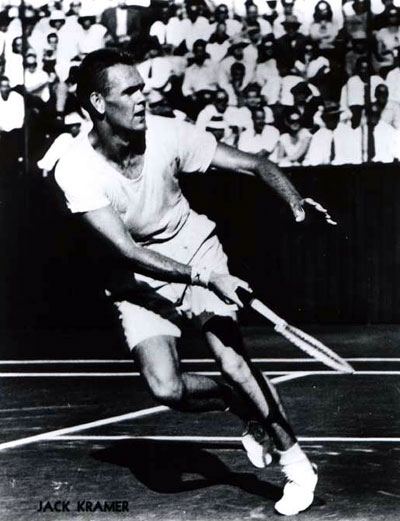
He began his tennis career by taking lessons from teaching professional, Dick Skeen. Within a year, he was playing junior tournaments. He played on the Montebello High School tennis team with George Richards. Because of his obvious ability and his family's lack of money, he came under the guidance of Perry T. Jones. at the Los Angeles Tennis Club (LATC). Jones was the President of the Southern California Tennis Association (SCTA). Kramer traveled many hours each day from his home in Montebello, California, to play tennis at the LATC and the Beverly Hills Tennis Club. He was able to play against such great players as Ellsworth Vines, Bobby Riggs, and Bill Tilden. He was the National Boys' Champion in 1936, and the winner of the 1938 National Juniors Interscholastics. He competed occasionally in men's tournaments on grass courts in the East. He won matches against nationally ranked men such as Elwood Cooke. He also played with high school teammate, George Richards, who later was nationally ranked.
Kramer competed at the U.S. National Championships seven times from 1938 through 1947. He lost his first match in 1938 in straight sets, winning only two games. At the 1939 U.S. Championships he was beaten in the second round by 11th-seeded and fellow Californian Joe Hunt. In 1940 Kramer defeated fourth-seeded Frank Parker in a five-sets quarterfinal but lost to second-seeded and eventual champion Don McNeill in the semifinal. At the 1941 Championships he was seeded for the first time, at No. 11, and reached the quarterfinal where third-seeded Francis Kovacs proved too strong. Kramer received a leave from his duties in the Coast Guard to compete at the 1943 Championships. Seeded second, he reached the final, despite being weakened by food poisoning, but lost it to Joe Hunt in four sets. During World War II he continued to win prizes in the United States, since the war had effectively put an end to international tennis, but did not compete in the U.S. Championships in 1944 and 1945.
The first Grand Slam tournament Kramer entered after the war was the 1946 Wimbledon Championships were he was seeded second but was upset in by Jaroslav Drobný in a five-set fourth round match. At the 1946 U.S. Championships he was seeded third but managed to win his first Major singles title after a straight-set victory in the final against Tom Brown, losing just a single set in the tournament. At the 1947 Wimbledon Championships Kramer was seeded first and justified it by winning the title after another straight-sets win against Brown in a final that lasted only 48 minutes.
Kramer made his debut for the US Davis Cup team in 1939 in the final of the World Group against Australia. Together with Joe Hunt they lost the doubles match against John Bromwich and Adrian Quist. In 1946 and 1947 he was part of the winning US team, defeating Australia in both finals and winning all four of his singles matches. After 1947 he became ineligible to play for the Davis Cup on account of becoming a professional player. He compiled a Davis Cup match record of seven wins and two losses.
Professional player
Kramer turned professional in November 1947, signing a $50,000 per year contract with promoter Jack Harris. He made his pro debut against Bobby Riggs on December 26, 1947 at Madison Square Garden. 15,114 people showed up for the match in one of the worst snow storms in New York history to watch Riggs win. Kramer went on to win the tour with Riggs 69 to 20 and became the top professional for the next six years. Bobby Riggs and Kramer convinced Sarah Palfrey Cooke and Pauline Betz to turn professional and play matches prior to their main contest. 1947 Australian Championships winner, Dinny Pails, and four-time US Championships semifinalist, Pancho Segura, also turned professional in late 1947 and played against each other on the undercard of the 1948 Kramer vs. Riggs tour. He retired from competitive tennis in 1954 due to arthritic back problems and went on to promote his Pro Tour. He made brief comebacks on tours with Hoad and Rosewall in the late 1950s.
Author
In his 1979 autobiography, The Game: My 40 Years in Tennis, Kramer calls Helen Wills Moody the best women's tennis player that he ever saw. "She was the champion of the world when I was 15 and played her – she won seven Forest Hills and eight Wimbledons.... I beat her, but Helen played a good game."
Kramer ranked the best possessors of tennis shots as of 1979:
Kramer's serve and forehand were equal to the best players in the game, but he would not talk about his own strokes.
Kramer attended Rollins College in Winter Park, Florida, and he played on the tennis team in the 1941 and 1942 seasons. Pauline Betz was there at the same time.
Commentator
Kramer started working for the BBC as a commentator on the Wimbledon Championships in 1960, a role in which he was very popular because of his intimate off-court knowledge of most of the players. He was paired with Dan Maskell in the commentators booth. However, he was dropped by the BBC in 1973 because of his role in the ATP boycott of Wimbledon that year, which saw 81 players, including defending champion Stan Smith, stay away from the tournament.
Death
Jack Kramer died from a soft tissue cancer on September 12, 2009 at his home in the Bel Air neighborhood of Los Angeles, California.
Awards and honors
Kramer was inducted into the International Tennis Hall of Fame in Newport, Rhode Island, in 1968. From 1979 until 1981 the Los Angeles Tennis Open, a tournament he was involved with since the 1950s, was known as the "Jack Kramer Open".
